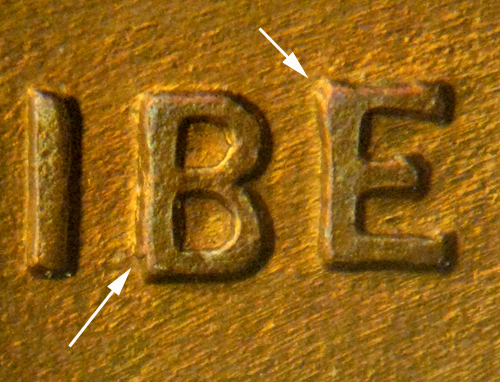PART II. Die Varieties:
Reduction Lathe Doubling
This form of raised doubling is subtle and characterizes all coins produced in a particular year, and sometimes over many years. It is produced in the initial stages of die preparation, as a large bias relief model of the design is transferred to a master hub by use of a Janvier Reduction Lathe. This device works in basically the same way as an artist’s pantograph. Vibration during the prolonged transfer process can result in slight duplication along the edge of the design.
.
For more information concerning reduction lathe doubling click HERE

The first year of the Lincoln cent production saw a reduction lathe doubling. This occurred in the BE of LIBERTY as an extra, thin bar on the vertical of the B and a notching on the top, left of the E.These anomalies lasted throughout the Lincoln cent production, in varying degrees, until the year 1956, when LIBERTY was re-engraved.